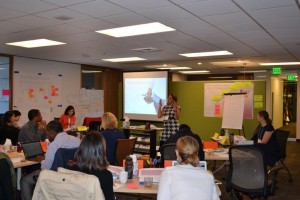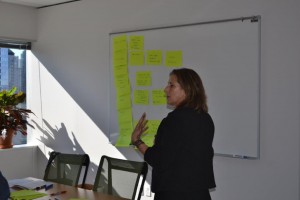Capabilities
My advising services focus on three individual but definitely linked areas: measurement, leaning, and evaluation; theory of change; and learning design. I am committed to these areas because they are leading-edge practices that provide the structure and support needed for carrying out impactful work.
MLE
Measurement, learning, and evaluation
One size does not fit all. Measurement, learning, and evaluation (MLE) requires a customized approach that fits an organization’s culture. This includes the reach of its vision and appetite for risk, and its people, financial, and operational resources.
In my work, I always put this culture first, customizing the MLE approach that will best serve my clients’ visions and goals. As I have learned, regardless of the size of a program or organization, the fundamental questions are the same:
- Why?
- What?
- How?
- So what?
- Now what?
These clients, which have ranged in scale from United Nations organizations to global foundations to small family foundations, include the Bill & Melinda Gates Foundation, the William and Flora Hewlett Foundation, the Brainerd Foundation and the Campion Foundation.
Working with colleagues from ORS Impact, the firm I founded and led for more than 25 years, I also created the curriculum for the development of an MLE Consulting Lab, launched its inaugural class, and have presented workshops on this content at the American Evaluation Association and Social Impact Analyst Association.
My publication, Five Insights to MLE, co-authored with my colleague Sarah Stachowiak, CEO of ORS Impact, shares our key learnings gained throughout the development of multiple MLE plans.
I enjoy the opportunity to contribute to the development of MLE plans that are right-sized for each client. I bring with me a host of advisory services, including the expertise to:
- Facilitate a series of meetings with your ad hoc MLE working group to develop all elements of your plan
- Scan your existing MLE approaches and recommend a direction that will be most impactful
- Develop tools and processes that support your MLE
- Coach your staff on effective implementation of MLE
THEORY OF CHANGE
The process of constructing a theory of change is arguably as valuable as the product. At the same time, I often play the role of “critical friend” who guides its development, a contribution that can make all the difference in the end product.
In working with theories of change at the 50,000-foot organizational level and building nested theories of action that align individual programs and strategies with cross cutting organizational frameworks, I have honed and validated a portfolio of applications that make important contributions to the process, including those that:
- Use a wide lens to consider the various strands of effort
- Gather diffuse perspectives
- Synthesize a large amount of information into coherent categories
- Test the logic of the linkages between strategies and outcomes—“can you get there from here?”
- Identify meaningful interim outcomes
- Apply relevant frameworks that can become the containers for future strategies and programs
- Consider external factors that influence the theory of change
- Align the theory of change with the existing or aspirational strategic direction
- Identify gaps in the theory of change
In developing hundreds of theories of change for a variety of programs, strategies, initiatives, and collective-action efforts, I have gone beyond merely mastering the art and science of theory-of-change development. Clients have found that the theories of change we have developed together stand the tests of time, transparency, building alignment, and guiding actions, while also focusing learning, and holding themselves and their partners accountable.
I have seen the wisdom of working with “heavy lifting” working groups and of keeping decision makers engaged with the process, so that consensus is built along the way. I believe that the only theories of change worth doing are ones that have life to them and are active guides in the thinking and actions of the organization—the two main criteria I use as my starting point for guiding their development.
Learning Design
While many organizations aspire to use data-driven decision making, the translation of data into relevant actions can be a big hurdle.
The space between data and action is a learning space. I have designed numerous processes that advance learning opportunities. Some have been straightforward learning circles in which a group of people creates the data story based on the evidence that has been collected. Others have been analytic sessions where key findings are shared. Working together, these produce the kind of feedback that can be translated into actionable directions. Still other processes have set up ongoing learning opportunities, such as communities of practice that tackle tough issues, identifying cross-cutting outcomes for a strategy, or the benefits of cross-sector work for effecting racially equitable outcomes for low-income kids.
Learning from data is a practice that is underdeveloped in most organizations. I have significant experience in lifting up thoughtful questions, inspiring team members to find common themes and outliers, and supporting “sense making” that breathes life into what otherwise might be static data. My clients often adapt new practices, based on our work together, that further institutionalize these sensemaking approaches.





